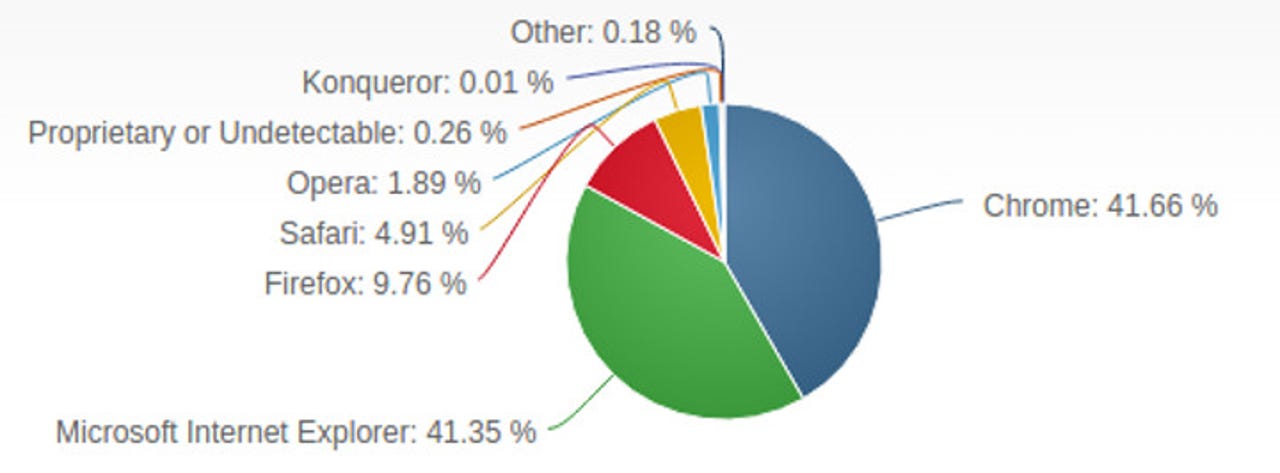Internet Explorer, the second-place web browser

In May 2016, for the first time since Bill Clinton was president, Tim Couch was the first pick in the NFL Draft, and there were about 150 million internet users, IE is not the top web browser.

Everyone now agrees: Internet Explorer is, at best, the second most popular web browser.
Sometime in late 1998 or early 1999, Microsoft's Internet Explorer (IE) became the most popular web browser, beating out Netscape. Microsoft made this happen by illegally bundling IE with Windows.
While Microsoft got into some legal hot water, it didn't matter in the marketplace -- by 2002, Netscape had 3.4 percent of the browser market space, while IE totally owned the market with 96 precent. Netscape staggered on for a few years. Things have changed. Now, even NetMarketShare has IE as the second place web browser to Google Chrome.
NetMarketShare was the last of the major web browser measurement groups to have IE in the lead. StatCounter had Chrome beating out IE as early as May 2012.
In NetMarketShare's latest numbers, IE and Edge, which the company counts as IE, dropped by 2 percentage points in April to 41.4 percent of the total global browser user share. At the same time, Chrome jump by 2.6 percent to 41.7 percent.
The real loser, though, was Mozilla Firefox which was the first web browser to give IE a run for its money after Netscape died. It dropped by NetMarketShare's count to 9.8 percent.
It was Google Chrome, beginning with its arrival in 2008, that started seriously eroding IE's market lead. By 2011, it had become clear that IE was in trouble.
StatCounter actually has IE in third place. StatCounter, which uses a different methodology to NetMarketShare, has Chrome as the top dog, with 56.4 percent in March; Firefox as second with 14.3 percent; and then IE with 12.5 percent.
You can argue about NetMartketShare and StatCounter's methodologies until the cows come home. The US federal government's Digital Analytics Program (DAP), with its running count of the last 90 days of government website visits, gives an unbiased view of primary American web browser usage.
By the latest DAP count of desktop, tablet, and smartphone web browsers, Chrome is number one with 43.3 percent. That's a gain of 0.2 percent in the last three weeks. Safari, thanks largely to the iPhone, comes in second with 21.9 percent. Safari too is gaining momentum with an uptick of 0.5 percent in the last few weeks. IE dropped by 0.5 percent to 19.6 percent.
In short, everyone who measures web browser popularity is showing IE in decline.
Windows, with 51.1 percent of all end-user traffic by DAP's measurements is still easily the top desktop. Mac OS X, 8.7 percent, and Chrome OS, 1 percent, are far distant. That said, while Windows remains popular, IE hasn't.
With more and more applications depending on the web, including Microsoft's own Office 365, and more users relying on smartphones and tablets -- Apple iOS 19.5 percent and Google Android 17.5 percent -- Microsoft should be concerned with IE's decline. Windows 10's Edge, with only 2.6 percent of the market by DAP's count, isn't making up for IE's lower market-share.
Related Stories: